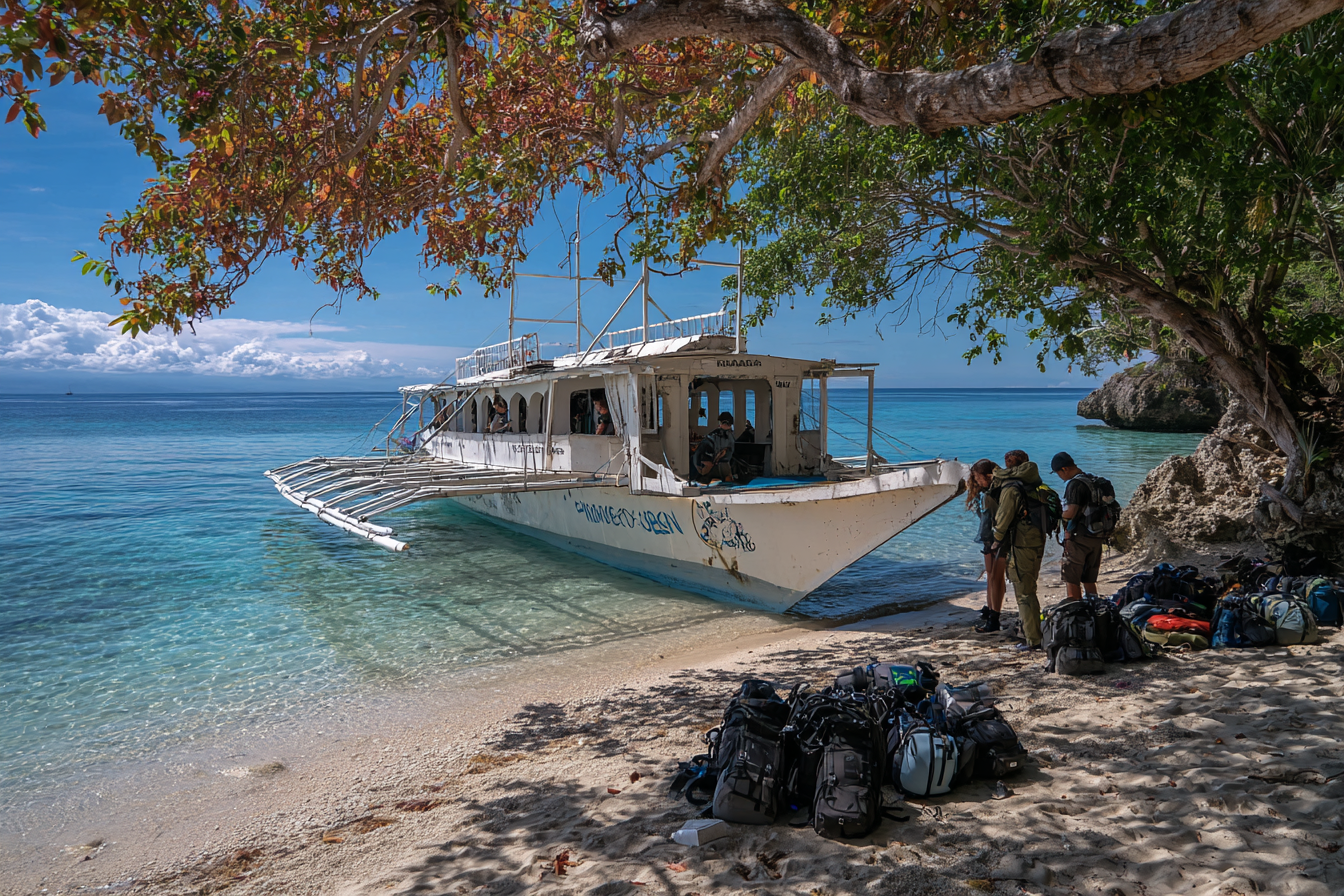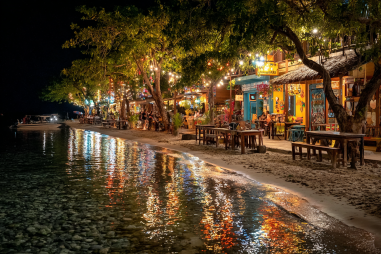Planning a trip to Apo Island? This small volcanic island, located in the Philippines, is renowned for its turquoise waters, vibrant marine life, and stunning coral reefs. Whether you are a snorkeling enthusiast, a diver, or simply someone who appreciates natural beauty, Apo Island offers a tropical escape worth experiencing. To help you make the most of your visit, here are essential travel tips covering transportation, accommodation, what to bring, local culture, and more. With these insights, your trip to this idyllic paradise can be smooth, enjoyable, and unforgettable.
How to Get to Apo Island: Transportation Options
Getting to Apo Island involves a bit of adventure, which is part of its charm. Most travelers start their journey from Dumaguete City on Negros Island. From there, you can reach Apo Island by boat, as it’s only about 7 kilometers offshore.
First, you’ll need to get to Dumaguete, which is well connected by air and sea. Dumaguete Airport has regular flights from Manila and Cebu. If you’re coming from other parts of the Philippines, you can take ferries or buses to Dumaguete. Once in Dumaguete, head to the Malatapay Market or Malatapay Port, roughly 20-30 minutes by motorbike or tricycle from the city center.
At Malatapay, you can catch a small outrigger boat that departs frequently for Apo Island. The boat ride typically takes around 20-30 minutes. Be sure to check the boat schedules ahead of time as trips depend on weather and sea conditions. It’s common to share boats with other visitors, which also makes the journey more social and eco-friendly.
Best Times of Year to Visit
The best time to visit Apo Island is during the dry season, which runs from November to May. During these months, you can expect calmer seas, clearer waters, and more predictable weather — ideal for snorkeling, diving, and island hopping. The peak tourist season often coincides with the Philippine holidays, especially around Christmas and Holy Week, so if you prefer a quieter experience, aim for the shoulder months like November or April.
Avoid visiting during the wet season (June to October), as rainy weather and occasional typhoons can disrupt transportation and outdoor activities. However, some travelers may still visit during this period for lower accommodation prices and fewer crowds, but be ready for more unpredictable conditions.
Recommended Accommodations and Booking Advice
Apo Island offers a range of accommodations from rustic beach cottages to more comfortable guesthouses. Because the island is undeveloped and prioritizes conservation, accommodations tend to be simple but cozy, emphasizing eco-friendliness.
Popular options include beachfront lodges and small resorts operated by locals that provide basic amenities, fresh seafood meals, and easy access to snorkeling spots. Booking ahead is advisable, especially during peak months, as the number of rooms on the island is limited.
If you prefer more variety, you can also stay in Dumaguete and visit Apo Island as a day trip. However, staying on the island overnight allows you to enjoy reef visits early in the morning and avoid rushed day trips.
What to Pack for Apo Island
Packing smart can help ensure a comfortable stay on Apo Island. Here are essentials to consider:
- Lightweight clothing: Bring breathable clothes suitable for tropical weather, including swimwear, cover-ups, and a hat for sun protection.
- Snorkeling gear: While some rentals are available, having your own mask, snorkel, and fins guarantees better fit and hygiene.
- Reef-safe sunscreen: To protect your skin and the coral reefs, opt for mineral-based sunscreens free of harmful chemicals.
- Insect repellent: Essential for preventing mosquito bites, especially in the early evening.
- Reusable water bottle: Staying hydrated is key; also, help reduce plastic waste.
- Basic first aid kit: Include band-aids, antiseptic wipes, and any personal medications.
- Waterproof bag or dry bag: Useful for keeping electronics and valuables dry during boat rides or beach days.
Food and Dining Options on the Island
Dining options on Apo Island are modest but offer fresh, tasty meals primarily featuring local ingredients. Many accommodations include meals as part of their service, commonly serving seafood dishes, rice, and tropical fruits.
You can expect simple but delicious fare such as grilled fish, kinilaw (Filipino-style ceviche), and vegetable stews. There are a few small eateries near the docking area, where you can savor local flavors prepared by friendly residents. While there aren’t any high-end restaurants, the authentic island cuisine adds to the charm of your trip.
Cultural Etiquette and Local Customs
Respecting local culture and customs is important when visiting Apo Island. The island’s community is close-knit and deeply connected to both land and sea. Here are some key etiquette tips:
- Greet locals warmly: A simple “hello” or “good day” in English or basic Filipino phrases is appreciated.
- Ask permission before taking photos: Especially when photographing people or private property.
- Dress modestly when off the beach: While swimwear is fine near the shore, wear appropriate clothing when visiting local homes or communal areas.
- Support local businesses: Buying souvenirs or meals from residents helps sustain the community.
- Keep noise levels down: The island is peaceful, so respect quiet hours, especially at night.
Tips for Environmentally Responsible Travel
Apo Island is a marine sanctuary, so environmentally responsible travel is crucial for preserving its natural beauty. To minimize your footprint:
- Use reef-safe sunscreens to protect coral ecosystems.
- Avoid touching or stepping on corals and refrain from taking anything natural from the island.
- Take all your trash with you or dispose of it properly in designated areas.
- Conserve water and electricity whenever possible.
- Follow guidelines set by marine sanctuary staff and guides.
By being mindful, you help maintain Apo Island as a pristine destination for future travelers and the diverse marine life calling it home.
Safety and Health Precautions
Overall, Apo Island is safe for travelers, but it’s good to take standard precautions:
- Check weather conditions before your trip and during your stay, especially during the rainy season.
- Use life vests during boat transfers, even if you’re a strong swimmer.
- Be cautious when snorkeling or diving; always go with a buddy and follow guide instructions.
- Drink bottled or purified water to avoid stomach discomfort.
- Keep a basic first aid kit handy for minor injuries or insect bites.
If you have any health concerns, be sure to consult a travel doctor before your trip, and inquire about necessary vaccinations or medications.
Enjoying Your Trip to Apo Island
Apo Island is a treasure trove of natural wonders and warm hospitality, offering a truly immersive tropical experience. By planning your trip with these travel tips in mind—from how to get there, to where to stay, what to pack, and how to honor local customs—you set yourself up for an adventure that’s not only enjoyable but meaningful. Embrace the laid-back island vibes, dive into crystal-clear waters filled with vibrant marine life, and connect with the friendly community. With a little preparation and respect for this beautiful sanctuary, your Apo Island getaway will surely be one to remember.







